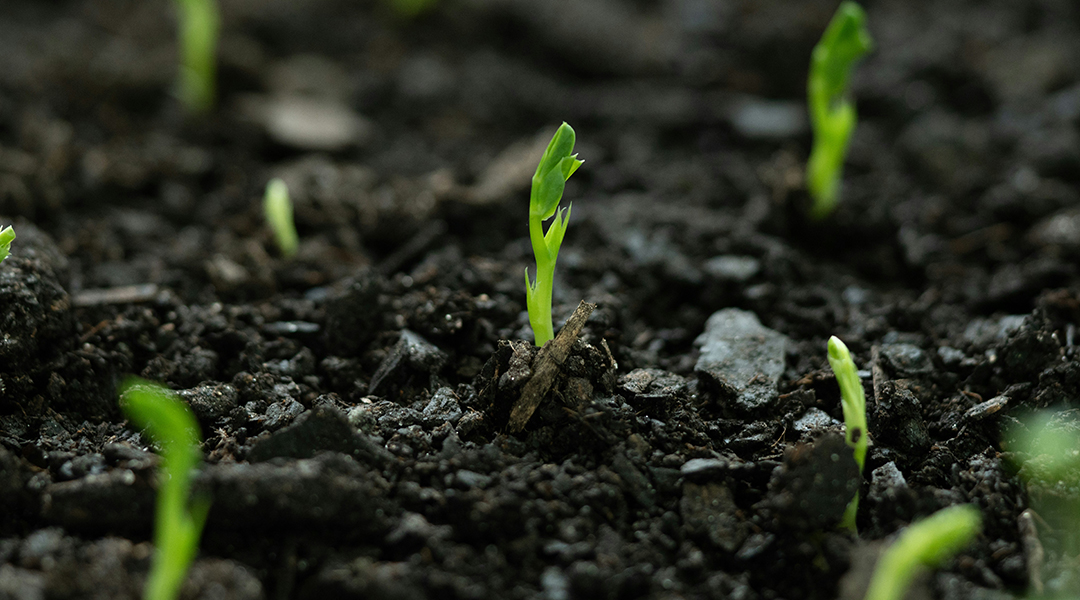A new study shows that antibiotic use can weaken support from helpful bacteria in soil, making plants more susceptible to diseases aboveground. Much like how an altered gut microbiome affects human health, disrupting the growth of microbes in the soil around tomato plant roots can leave them vulnerable to disease.
The findings highlight the need for sustainable approaches that boost or revive beneficial microbes, strengthen natural plant defenses against pathogens and reduce antibiotic use.
In agriculture, antibiotics are often used to tackle crop diseases. Rising antibiotic resistance and the impact on pollinators and beneficial microbes have sparked tighter regulations on antibiotic use in farming across Europe. With antibiotic use in agriculture continuing elsewhere, it is crucial to understand its impact on plant health and foster more sustainable agricultural practices.
The world of the rhizosphere
The soil around roots, called rhizosphere, is rich in a myriad of microbes, akin to the human microbiome. The roots secrete various substances that attract beneficial bacteria, which in turn, release molecules that help the plant grow while fending off harmful disease-causing microbes.
And just like an altered gut microbiome can make humans more susceptible to disease, so too can an imbalanced rhizosphere influence plant health. Dysbiosis, as it is known, has been shown to make tomato plants suffer from poor underground health.
“Previous studies have looked into how rhizosphere dysbiosis is linked to below ground diseases,” said Samuel Martins, a researcher at the University of Florida, Gainesville, in the United States, wrote in an email. “Because rhizosphere microbes can trigger plant defense systemically (the whole plant), we thought that the imbalance in the rhizosphere could also make the plant more susceptible to foliar diseases.”
To test their theory, the team worked with tomato plants, which are commercially important and grow quickly. Moreover, the tomato genome has already been mapped out, making for the perfect experimental system.
They explored the impact of a common antibiotic, streptomycin, on tomato plants infected with the foliar bacterial spot pathogen (Xanthomonas perforans), an important threat to tomatoes.
Tomato plants as test subjects
The team administered streptomycin to weaken the rhizosphere of tomato plants that were three weeks old. For control, a group of tomato plants were simply watered in place of the antibiotic. While banned in Europe, streptomycin is used in greenhouse tomato production in the Americas and Asia. But increased use of antibiotics raises issues with the spread of resistance among bacterial pathogens.
“Since the 1950s antibiotics have been used in agriculture to treat bacterial diseases of plants, in both controlled conditions (e.g., greenhouses) and spraying in the field. Surprisingly, these antibiotics are the same that we use to treat human diseases,” said Martins. “What we don’t know is: What is the impact of the antibiotic application on plant microbiome and plant defense.”
Twenty four hours after antibiotic use, the researchers sprayed the harmful bacteria onto the leaves of all plants. Akin to the use of fecal transplants in humans, soil microbiome transplants from healthy plants have been applied to those with dysbiosis with some success. So, the team carried out these transplants for half the plants 48 hours after streptomycin application.
The tomato plants experiencing dysbiosis due to the antibiotic showed greater signs of disease at 13 and 15 days compared to the control plants. Plants with transplants fell somewhere in the middle — they experienced fewer signs of disease but did not do as well as the control plants. However, these improvements were not statistically significant. According to Martins, more time may have been needed to reset the dysbiosis.
The problem with soil dysbiosis
“The work clearly shows that dysbiosis in soil can pose a problem for plants,” said Harsh Bais, a researcher at the University of Delaware who was not involved in this study, and Martins’ former doctoral advisor, wrote in an email to Advanced Science News. “The analogy could be drawn from human studies, wherein over usage of antibiotics leading to gut microbiome poor health and disease progression.” While the impact of dysbiosis on plant health above-ground was evident, the mechanism underlying this link needs to be evaluated.
The plants with dysbiosis showed a severe drop in the diversity and abundance of their microbiota, especially in cyanobacteria, actinobacteria and pseudomonata, compared with the control plants. Plants that received a soil transplant showed a very slight improvement in microbial diversity and abundance. The research team also observed changes in gene expressions, with several genes involved in plant defense and immunity being amplified.
“This is expected that a xenobiotic may modulate/damage the microbiome, but its impact on plant health specially for root to shoot messages for foliar diseases is a novel aspect,” added Bais.
The team is interested in identifying the key microbes whose absence increases disease severity. Adding these microbes back into the soil could help protect against disease without the exhaustive use of antibiotics. “The findings emphasize the need for strategies that preserve or restore beneficial microbial communities to bolster plant resilience against pathogens,” added Martins.
Reference: Toi Ketehouli, et al., The underground world of plant disease: Rhizosphere dysbiosis reduces above-ground plant resistance to bacterial leaf spot and alters plant transcriptome, Environmental Microbiology (2024). DOI: 10.1111/1462-2920.16676
Feature image credit: Nora Long on Unsplash

















